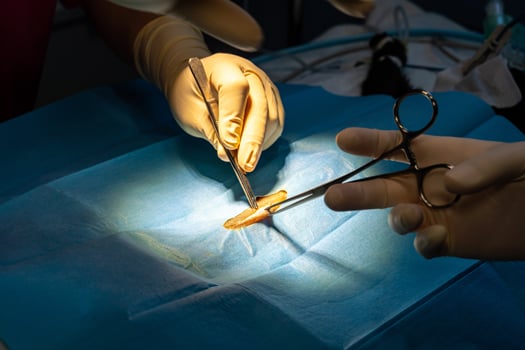
With virtually any type of surgery, there will be an incision. During a microdiscectomy, which is a less invasive form of a discectomy, the incision made is small, which can be beneficial for healing and recovery. However, you still need to take care of the incision during the initial stages of recovery. This article explains what to keep in mind regarding incision care after microdiscectomy surgery.
Let the Incision Tape Fall Off
Typically, small bandages or surgical tape are placed over the incision site. This way, the incision location will be protected when you shower, sleep, and bathe. The first step you can take with incision care is to let these bandages or pieces of tape fall off on their own. This usually happens after about a week or so. With regular bandages, you may need to remove them yourself after a week. However, if your doctor used pieces of surgical tape, these will likely fall off naturally.
Wash the Incision Site
The incision site will also need to be washed at least once a day. This can be done safely with warm water and soap. Simply pat the area dry when done. Do not apply any friction to the site. Both bandages and surgical tape are designed to be breathable, which means the water will pass in and out safely.
Avoid Certain Skin Cleaning Products
Do not use any cleaning products that might burn your skin, such as rubbing alcohol or hydrogen peroxide. Additionally, avoid shampoos, soaps, and other products that could irritate the surgical site.
Look for Signs of Infection
Another important step to take when caring for an incision is to look for signs that the site may be infected. In addition to redness around the location of the microdiscectomy, signs of an infection include:
• Unusual discharge (e.g., discolored drainage)
• Pain around the surgical location
• Unusual discomfort beyond what is typically common during recovery
If you notice any of these signs of infection, contact your doctor. Surgical site infections are generally minor, but they can still be serious if not taken care of sooner rather than later. Treatment usually involves antibiotics. In some instances, it may be necessary to reopen the surgical site if medication is not alleviating the infection.
Make Lifestyle Adjustment to Encourage Healing
It can also be helpful to promote healthy healing by eating foods that naturally ease inflammation, such as green leafy vegetables and low-fat dairy products. Being active with physical therapy can be beneficial as well, since this makes tissues healthy by strengthening spine-supporting muscles. Physical therapy exercises also increase circulation, which boosts the body's natural healing and recovery process. This further reduces the risk of a surgical site infection.
Although herniated disc treatment with microdiscectomy surgery is generally very successful, a hole is left in the outer wall of the disc. Patients with a large hole in the outer ring of the disc experience 70 percent of all reherniations after surgery. A new treatment, Barricaid, which is a bone-anchored device proven to reduce reherniations, was specifically designed to close the large hole often left in the spinal disc after discectomy. In a large-scale study, Barricaid was proven 95 percent effective in a study of over 500 patients. This means 95 percent of Barricaid patients did not undergo a reoperation due to reherniation in the 2-year study timeframe.
If you have any questions about the Barricaid treatment or how to get access to Barricaid, ask your doctor or contact us at 844-288-7474.
For full benefit/risk information, please visit: https://www.barricaid.com/instructions.


Comments